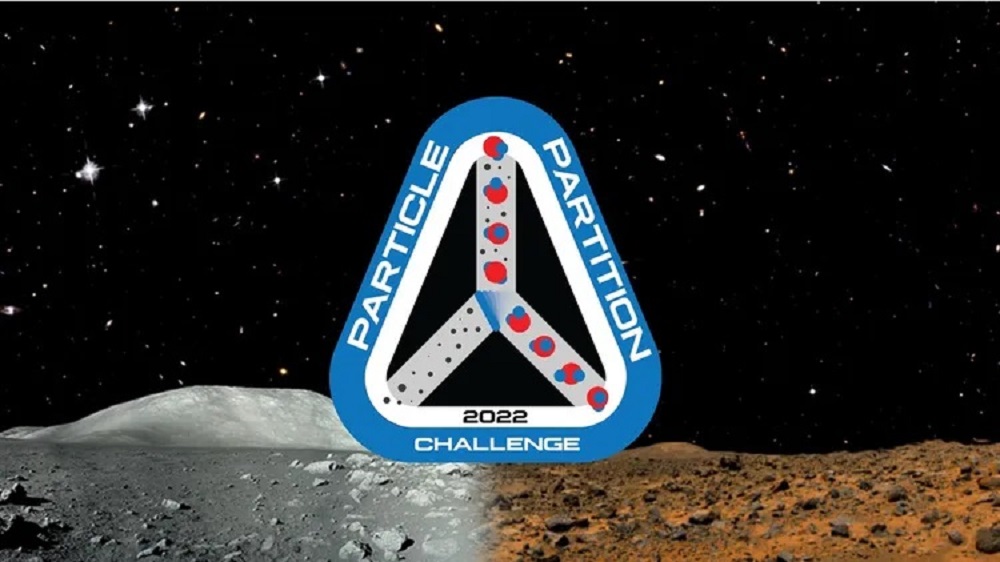In the coming decade, NASA and the China National Space Agency (CNSA) will send the first astronaut crews to Mars. Unlike missions to the International Space Station (ISS) or the Moon, crewed missions to Mars present several unique challenges because of the distance and transit times involved. For instance, it is only practical to send missions to Mars when our two planets are closest to each other in their orbits (known as “Opposition“), which occurs every 26 months.
Even then, it can take up to nine months for spacecraft to reach Mars, creating all kinds of logistics headaches. On top of that, there’s the need for life support systems that will maintain a breathable atmosphere inside the spacecraft. Like the system that allows astronauts to live aboard the ISS for extended periods, methods are needed to scrub waste carbon from the air and safely sequester it.
HeroX, the world’s leading platform for crowdsourced solutions, has launched the NASA Particle Partition Challenge. With a total prize purse of f $45,000, this competition is looking for innovative ideas on how to ensure that astronauts can breathe comfortably on the way to Mars! NASA is looking for a next-generation life support system to keep crews healthy on their mission to Mars. Credit: NASA Astronauts living aboard the ISS rely on a complex life support system that routinely scrubs the air for carbon dioxide waste produced by exhalation.
From 2011 to 2017, this system included a Sabatier reactor that uses heat and hydrogen gas to convert carbon dioxide into methane (CH4) and water. The methane can be used for more chemical reactions or as a fuel source. The water, another crucial resource for space exploration, can be used on its own or electrolyzed to create oxygen gas and hydrogen (which can be processed with carbon to create more methane).
For years, NASA has been working on the next-generation life support system to support crewed missions to Mars and other locations beyond the Earth-Moon system. This system will rely on a Bosch reactor, which relies on electrolysis and hydrogen gas to convert carbon dioxide into oxygen gas, with solid carbon (graphite) and water created as byproducts. Once again, the resulting water is extremely valuable as a resource, but the graphite particulates create a problem.
These must be removed regularly for the reactor to keep operating and are hazardous if not removed correctly. This represents a major challenge since Bosch reactors produce large amounts of graphite on a daily basis. According to NASA’s estimates, a crew of four astronauts will produce roughly 1 kg (2.
2 lbs) of carbon particulates a day. In addition, the particulates are very fine, rating in size from 1 to 500 microns (averaging 8. 36 microns).
Therefore, the removal methods must be very efficient and precise so that carbon particulates don’t escape back into the spacecraft’s internal atmosphere and slowly pollute the air supply. To this end, the Challenge is looking for innovative ways to safely and efficiently remove fine particulate carbon from a continuously-running Bosch reactor without impacting its performance. The winning designs will have the chance to become part of the life support systems used by astronauts as they make the long journey to Mars.
It will also aid in the development of future extraterrestrial habitats that will enable long-duration missions on the surface of the Moon and Mars. In short, the technology this Challenge inspires will become essential to future missions to deep space, where opportunities for resupply are few and far between, and sustainability and self-sufficiency are vital. Artist’s concept of a bimodal nuclear rocket making the journey to the Moon, Mars, and other destinations in the Solar System.
Credit: NASA “This problem has been brought to the right people,” said HeroX CEO Kal K. Sahota. “The HeroX community is ready to help again, this time breathing life into the length of planetary missions.
” To encourage the next generation of innovators and potential astronauts, there will also be a Junior challenge running concurrently for competitors under 18 years of age. This Challenge will ask competitors to develop ideas for how habitats far from Earth can maintain a breathable atmosphere for their inhabitants. The Challenge kicked off at 09:00 AM EDT (06:00 AM PDT) today (Wednesday, October 26th) and will remain open to submissions until January 12th, 2023.
The judging panel will finish evaluating submissions in early March, followed by the announcement of the three winning entries on March 16th. The competition is open to anyone 18 years of age or older, participating as an individual or a team from anywhere in the world, as long as U. S.
federal sanctions do not prohibit participation (some restrictions apply). Winners of this single-phase competition will share a total prize purse of $45,000, while the top three participants in the Junior category will each receive public recognition and NASA swag. For more information on the Challenge and eligibility, head over to the HeroX competition page.
Further Reading: HeroX The post Clearing the Air on a Trip to Mars: the NASA Particle Partition Challenge! appeared first on Universe Today. .
From: universetoday
URL: https://www.universetoday.com/158320/clearing-the-air-on-a-trip-to-mars-the-nasa-particle-partition-challenge/



